Types of Waterproofing & Waterproofing Solutions
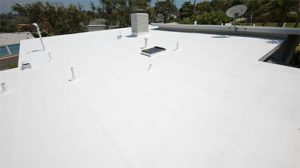
We are the best solution providers for waterproofing for water leakage in your building or house. Waterproofing makes an object or shapes Waterproof or water-resistant. It remains relatively unchanged by water or resists water access under specified conditions. Used units may be used in wet environments or underwater to the specified depth.
Who does waterproofing?
A Care taker is one of the best companies known for waterproofing services in Rawalpindi and Islamabad. We are renowned for our best quality and services. We have our best team of experts to provide their best facilities.

Who invented waterproofing?
Charles Macintosh FRS Charles Macintosh FRS (29 December 1766 to 25 July 1843) was a Scottish/Irish chemist and the originator of the latest waterproof raincoat.

Who inspects waterproofing?
A building inspector or waterproofing specialist qualified to spot problems and recommend solutions must perform this inspection because waterproofing failures are not always easy to spot! In many cases, waterproofing issues are small problems that mask a larger issue. Caretakers have the best specialists available to provide their best services to solve their customer's issues.
Who is a Waterproofing expert?

Caretaker are the best waterproofing experts. We overbearingly are in the service of Islamabad and Rawalpindi. Our goal is to facilitate industrial waterproofing solutions for residential properties.
What Waterproofing compound?
DURABUILD INTEGRAL WATERPROOFING Consolidation is a waterproofing liquid commixture for concrete/ mortar with high water-reducing and pore-blocking ability. It is a blend of the specialized active constituent to waterproof concrete when there is permeability through hydrostatic head pressure or capillary absorption۔
What paint to use on waterproofing?
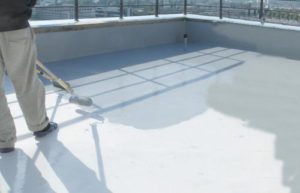
ISOMAT FLEX COAT is the ideal solution for external waterproofing surfaces against rain. It is a highly elastic, high-quality water-soluble paint based on acrylic elastomeric resins. ISOMAT FLEX COAT makes walls impermeable by rain
When to apply waterproofing?
Waterproofing is needed in sensitive and occupied areas, as concrete is susceptible to moisture filtering. The condition of many concrete roads and driveways attests to the dangers moisture filters through. The success of the waterproofing system will rely on proper concrete surface preparation.
When was waterproofing invented?
The latest waterproofing industry began in the 1900s when liquid membranes were first manufactured commercially. There were several innovations over the remainder of the 20th century as designers sought to improve the performance and longevity of waterproofing membranes.
When is waterproofing done?
Waterproofing is best done by and by construction. At this step, using high-quality liquid waterproofing compound with cement and sand can be applied for all brickworks and cement works, pillars and foundations, roof slabs, rendering, basements, and plastering.
Waterproofing when wet?
- Ensure the waterproof area is clean and free of mold, dirt, and dust. Using a vacuum cleaner is the best way to clean the area, as the board will not take up all the powder left by the plasters.
- Make sure the area is dry.
- Prime the damp area with a suitable primer for the membrane to be used (see datasheet).
- Allow the primer to (Times will vary depending on the heat and weather at the time of application).
- Apply a filter to all wall and floor junctions, and if timber or cement-based sheet has been used, apply a sealant to the joint between the sheeting. (See data sheet for the type of sealant to be used).
- Install shower angles and door angle, glue into position with
- Install tap flanges.
- Apply a coat of water-based membrane to the shower walls and bath walls.
- If using a water-based membrane, you will first need to apply some waterproofing membrane to any filet or joint that you have sealed, followed by embedding reinforcing material into the wet membrane, then coat over the reinforcing material with waterproofing membrane (make sure that there are no creases or air trapped in the reinforcing material).
- If you are using solvent-based polyurethane, apply a coat over the floor area with a 150mm return up the room's walls. (Reinforcing cloth is not needed with this type of membrane).
- Allow the product to dry before applying the second (This will vary permitting on the room temp and weather, see data sheet for a guide to drying times).
- Apply the second coat of membrane to the shower walls and the second coat to the (Reinforcing cloth is not required in this coat). Allow the membrane to cure before laying tiles on the membrane fully. (See datasheet for curing times).
Where is waterproofing done?
Overall, you can check any area all over the building that requires waterproofing, such as bathrooms and kitchens, basements, balconies, decks, green roofs, swimming pools, walls, and water tanks. Thus, you can determine which kind of waterproofing method can be applied in any particular setting.

Where is waterproofing used?
Waterproofing is used in building structures (such as basements, decks, or wet areas), watercraft, canvas, clothing(raincoats or waders), electronic devices, and paper packaging (such as cartons for liquids).
Where to apply waterproofing?
Membrane: Waterproofing should be related to all exposed monolayer surfaces, especially concrete. Under pressure slabs on the ground, the membrane can extend under the base walls and over the pile caps. Base waterproofing must extend above grade a minimum of 8 feet.
Why to use waterproofing?
Waterproofing is a method that averts water from penetrating your house. Waterproofing is very important as it help out to keep your house dry. It helps reduce moisture inside the house and protects things inside your house from damage caused due to humidity or water exposure.
Why is it mainly to waterproof your roof?

To protect water, waterproofing your roof blocks cracks, prevents leaks, and strengthens your safety against common environmental threats. Heat and radiation from the sun's rays cause your roof material to weaken. Over time, it can become brittle.
1. Roof waterproofing
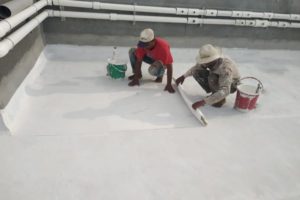
It's observed countless times that the roof could not withstand water spills. When it transpires, the water stays there either it evaporates due to high temperature, or the roof absorbs the water into itself. When preoccupation takes place, the water stays inside the roof’s mixture for a definite period until it begins to show leakage and seepage, and problems like paint up to end concrete dysfunction and similar mixture distortion take place, which is never in favor. If somehow we can build our roof water-resistant, which makes sure that concrete doesn’t absorb the water into its mixture, is the only solution we can come up with. That is possible through roof waterproofing in Pakistan. Good thing that waterproofing professionals take all the necessary applications over the area and ensure no leakage and seepage ever comes into your home again.
How long does roof waterproofing last?
It can be very expensive. And if you don't have the right material, you may need to do it again in 10 years. A cheap material might last 10 to 15 years. A quality PV membrane might be a third more expensive but lasts up to 60 years, so there are excellent long-term benefits."
What to use for waterproofing roofs?
Bitumen-based waterproofing products are the most preferred and widely used in the construction industry. This material is highly preferred for roof insulation with its ease of use and price/performance advantage.
What is the best roof waterproofing?
Bitumen-based waterproofing products are the most preferred and widely used in the construction industry. This material is highly preferred for roof insulation with its ease of use and price/performance advantage.
What makes a roof waterproof?
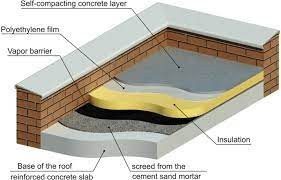
Rubberized asphalt trussed. Frequently has a sticky back with a covering membrane removed before installation. This special backing creates a waterproof seal between the underlayment and a clean roof deck. In severe winter regions, waterproof roofing underlayment at the overhangs of a roof is helpful.
Why is the roof leaking?

Most roof leaks are caused by one of five common factors: people, issues with seams, neglect, rooftop equipment, and weather. Prevention is, of course, better than repair. Once you get to know the main offenders, you can develop a strategy to avoid problems before they arise. People: It's OK to walk on your roof.
1. Bathroom waterproofing
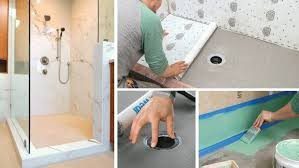
Waterproofing a bathroom involves putting in a physical barrier to the floors and walls to prevent moisture penetration into the home's structure. Before laying tiles, the waterproof membrane is put in to protect the walls and subfloor.
What does the whole bathroom need to be waterproofed?
If the bathroom floor is more than ground level or made of planks, plywood or particle boards, it must waterproof the entire bathroom floor.
What areas in a bathroom need to be waterproofed?

- it must waterproof the whole shower floor: be compelled, waterproofed
- Shower walls: be compelled and waterproofed up to at least 1800mm.
- The walls: be compelled and waterproofed up to not less than 150mm.
- Over the hob or step down, waterproofed to not less than
- If the bathroom floor is above floor level or made of planks, plywood or particleboards, it must waterproof the entire bathroom Naturally, some bathrooms will need to be completely waterproof to go beyond the minimum quality. If your budget allows it, it is a good idea to waterproof the whole bathroom anyway. That will ensure the whole bathroom floor and shower recess are waterproofed. Another thing to remember is that some councils need waterproofing done by a licensed waterproof expert to be compliant. Whether waterproofing a new or current building, make sure the tradespeople have the relevant licensing and insurance to carry out the job properly.
is bathroom waterproofing toxic

The waterproofing membranes and primers are not harmful or toxic. Splashes on the skin and eyes must be washed away with clean water. Apply products in well-ventilated areas.
How to test bathroom waterproofing?
Waterproofing of blocks shall be tested by seepage the surface with water to a depth of 50 mm for 48 hours or longer. That tests the water tightness of the floor. The test is found satisfactory if there is no leakage and there are no damp patches observed on the floor's surface.
Do you need to waterproof before tiling?
Water can slide through the tile joints and source damage to the walls behind the tiles. That is why it's important to waterproof the background that you will be tiling onto. Do I need to waterproof my bathroom walls? Bathrooms are the prime wet area in the house. Therefore, you require waterproofing the area so that water does not get into the house's substructure and cause major structural damage. Experts typically do waterproofing while the bathroom is being built.
Why is bathroom waterproofing?

Owning your bathroom waterproofed is one of the main aspects of a home improvement project. That's because waterproofing protects structures against damage and eliminates possible health concerns. Washing and bathing turns a lot of water vapor in bathrooms.
How to prevent water damage in the bathroom?
- Regularly check for elements of leaks. ...
- Repair or restore cracked, broken, or missing tiles, which allow water to seep in behind walls and under floors. ...
- Test valves for your toilets, showers, and sinks regularly to ensure they are properly working.
How to stop bathroom water leakage?
- Check every leakage from the source.
- Use the plumber's help.
- Chemical application over the surface.
- Tiles
- Passing chemicals through sewerage lines.
- Let it dry for 24 hours.
Basement waterproofing
Basement waterproofing involves techniques and mixtures used to stop water from acid in the basement of a house or a building. Waterproofing a basement below floor level requires applying sealant materials, installing drains and sump pumps, and more.
What is the best basement waterproofing sealer?
The best concrete sealers are the Lithi-Tek 4500 primer when sealing basement floors and foundation walls, followed by the Siloxa-Tek 8510 waterproofing sealer. If you install flooring in the basement, it is best to use a moisture vapor barrier coating like the Vapor-Tek 440.
How waterproof is the basement floor?
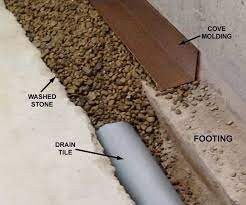
Two of the best choices for waterproof flooring for basements are epoxy paint and blocked concrete. Both are affordable, but they are durable and allow for adequate waterproofing. Epoxy paint dries thick and hard, providing the necessary durability to maintain a basement floor.
What waterproofing foundation?

Foundation waterproofing prevents water from entering a basement from the outside. It involves installing a system that can prevent water ingress into the structure as well as effectively deal with hydrostatic pressure.
Which basement waterproofing
system is best? When done properly, exterior drainage is generally thought to be the most effective way to waterproof a basement.
3. Wall waterproofing
A Caretaker company provides state-of-the-art wall waterproofing facilities in Pakistan. We understand that it is a very bad event to see seepage and wetness issues on the walls of homes and buildings. However, the locals of Islamabad and Rawalpindi are fortunate. The Caretaker is with an experienced team and the best quality materials to facilitate them through the best wall waterproofing facility in both cities. Whether a newly manufactured wall or an old one, we can provide cost-effective wall waterproofing services to counter wetness and seepage issues. With several years of experience in the field, Caretaker provides the best wall waterproofing services in Islamabad and the best wall waterproofing services in Rawalpindi. Our regional offices also provide the best wall waterproofing services in Islamabad and the best wall waterproofing services in Rawalpindi.
Waterproofing a house wall
If applied properly, waterproof paints create a fence on the wall's surface, keeping them safe from moisture and fungus. For better results, use waterproof primer on your bare walls before applying a fresh coat of paint. There are three main types of paints available to waterproof a wall.
Waterproofing a wall

ISOMAT FLEX COAT is the ideal solution for external waterproofing surfaces against rain. It is a highly elastic, high-quality water-soluble paint based on acrylic elastomeric resins. ISOMAT FLEX COAT makes walls impermeable by rain.
Why is the wall wet?
Condensation happens when hot, moist air hits cold, dry air. This meeting causes water droplets to form on cold surfaces (like your walls). This kind of moisture is what you'll find on the bathroom walls after a super-hot shower.
How to put waterproofing on the wall?
Waterproofing is done at the time of manufacture. Using a high-quality liquid waterproofing compound in the starting stage with cement and sand can be effective. Otherwise, use a waterproof coating before painting your exterior walls to prevent water leakage.
What is the best waterproofing for walls?
ISOMAT FLEX COAT is the ideal solution for external waterproofing surfaces against rain. It is a highly elastic, high-quality water-soluble paint based on acrylic elastomeric resins. ISOMAT FLEX COAT makes walls impermeable by rain.
Are bricks waterproof?

In short, bricks and mortar aren't 100% waterproof. Even modern homes built with cavity walls and largely impermeable materials can still be affected by penetrating damp (water coming in from outside). Damp and excess moisture within brick and stonework can lead to internal damage and the dreaded black mold.
Is a concrete wall waterproof?
Because concrete blocks are much more porous than poured concrete, however, and because they have more mortar joints than concrete, concrete blocks must be treated and sealed. The best waterproofing products for concrete blocks can be hand-rolled, sprayed on, or applied to primed walls with a liquid adhesive.
Can you waterproof brickwork?
Apply one coat of the impermeable water treatment to the untreated brick wall using a brush or roller. You can also choose to spray and apply your masonry cream.
Will waterproof render stop damp?
In many cases, you can cut back to the organic stone wall and re-render and re-plaster the damp wall with a water-resistant render. That will keep any residual moisture in the wall and stop it from passing through to new finishes while allowing the wall to dry out naturally.
3. Water Tank
The Caretaker specializes in providing Pakistan's best water tank waterproofing services. The water tank is one the most important parts of your home and building, and if there is any issue with the overhead and underground water tank, normal life gets disturbed very badly. In most homes and buildings, the water tank is made up of concrete, and due to this reason, special care and attention are needed to repair the water tank leakage and look for the ideal solution for water tank seepage. That is where the field experience of the professional team of Caretaker comes into play. We have the right expertise and best quality products for overhead and underground exterior and interior water tank waterproofing services. We can provide customized water tank waterproofing solutions to our beloved customers for all types of homes and buildings. Caretaker provides the best water tank waterproofing services in Islamabad and the best water tank waterproofing services in Rawalpindi with the help of a professionally trained team and premium quality products. The regional offices also provide the best water tank waterproofing services in Rawalpindi and the best water tank waterproofing services in Islamabad.
When is tanking required?
Tanking and/or waterproofing are needed when the shape sits floor below the, meaning the ground outside is a route for water to be delivered against the structure.
What is waterproof tanking?
Tanking – also referred to as below-ground waterproofing – involves the application of a waterproofing barrier to the walls, the base slab, and in some cases, the roof of the below-ground structure.
Will tanking stop damp?
Tanking a room can help tackle mold and damp problems and stop water from penetrating your building. If your inner walls are colder than your outer walls, condensation can form on them, and with condensation comes mold unless you have adequate ventilation.
5. Foundation Waterproofing.

The Caretaker is one of the pioneers in facilitating foundation waterproofing services in Pakistan. The foundation waterproofing guarantees that there should not be any cracks or seepage in the foundation of the structure of your building. The process of foundation waterproofing by the p of Caretaker. is carried out with the help of a special foundation waterproofing membrane that professionally goes deep into the foundation of the building shape.
The special quality chemical treatment is done on the outer foundation waterproofing material, which is already loaded with comprehensive composition to safeguard the pressure points of every foundation structure of your home and building. The Caretaker provides the best foundation waterproofing services in Islamabad and the best waterproofing services in Rawalpindi because we offer foundation waterproofing and premium quality chemical material for any other type of composite that has been used during the construction process. The regional offices offer the best foundation waterproofing services in Islamabad and the best foundation waterproofing services in Rawalpindi. We are considered in best waterproofing companies.
How do I waterproof my foundation?
Insert a waterproofing membrane. A heavy coat of the membrane, an asphalt-amend polyurethane material, can be troweled or sprinkled on to seal the foundation wall against water from the outside. Elastomeric membranes are made of amended asphalt and exhibit great waterproofing characteristics.
What is the black stuff on foundations?
Damp proofing a foundation wall is a procedure that involves using a mixture (typically tar- or asphalt-based) on the outside surface of foundation walls. These coatings are normally black in appearance.
3. Waterproofing Membrane
A waterproofing membrane is a sheet of water-tight mixture laid onto a surface to stop water leaks or damage. Waterproofing membranes generally consist of liquid applied or pre-formed sheets. They can be adhered to or installed around the foundations (like a structural slab) to prevent water penetration.
4. Waterproofing
Polyurethane is a generally used chemical used for waterproofing exposed surfaces, including roofs. Polyurea is one of the best waterproofing chemicals in Pakistan and can be used to waterproof joints and surfaces in concrete structures.
Thanks for sharing nice post.
ReplyDelete